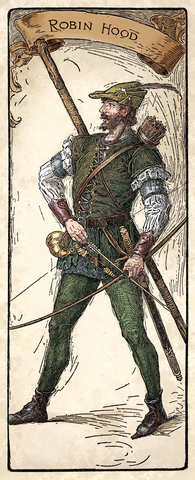The Magic Of Childhood Adventures
- Daisa Morgan
- Jul 7
- 2 min read
Some of the most powerful inspirations come from the sense of wonder we experience as children. I remember spending school holidays outdoors, imagining tiny creatures living under tree roots or picturing secret doors hidden in ancient stone walls. That same sense of discovery and curiosity is at the heart of Fingley World.

Fingley the Talking Tree was born from my memory and experience of watching a British television series called The Adventures of Robin Hood, broadcast weekly between 1955 and 1959, and because of this, actually having the most magical experience of playing in The Major Oak in Sherwood Forest, Nottinghamshire, an ancient oak tree reputedly used as a hideout by Robin Hood and is about 1,000 years old. It has a hollow in the trunk which I used to climb inside and hide in before it was fenced off in the 1970s to protect it.

The television series was set in the 12th century, during the reign of King Richard the Lionheart and Robin Hood, an outlaw residing in Sherwood Forest along with his band of men. He tried to protect the poor and unfortunate while also trying to outwit the Sheriff of Nottingham. Robin Hood is often depicted as a heroic outlaw who rebels against tyranny. This understanding of ‘good versus bad’, gave rise to me ‘seeding’ the Kingdom of Grednor, and the many hideous creatures who live there. A battle between the dark evil forces and the good and true forces of Fingley World.
The Legend of Robin Hood

Robin, Earl of Locksley, a Saxon nobleman, returned from the Crusades to find a Norman lord living in his ancestral home, Locksley Hall. He is forced to go to the Sheriff of Nottingham who represents the law, seeking to reclaim his land. But the Sheriff, another Norman, sides with the usurper. Robin is tricked into signing a document fatal to his claim, but when the plot to then murder him goes wrong, Robin ends up as a hunted man. He is thus forced into the life of an outlaw, dwelling in Sherwood Forest with a band of men who right the wrongs committed by the rich and powerful Normans against the poor and defenceless Saxons. He was given the name Robin Hood by the outlaw band's original leader, Will. When he meets the outlaws, Robin drops his title and asks to just be called Robin. As he is hooded, they call him Robin of the Hood.
The Major Oak is a massively important part of the U.K.’s national heritage both in terms of the natural world and the Robin Hood legend which brings so many people to Sherwood from around the world. Many people who visit the area want to come and see the Major Oak, and I am enormously grateful to have had the experience as a young child of playing in Sherwood Forest, and sneaking into the hollow of the tree. It felt safe, protective and I always felt sad when we had to leave. I can still remember to this day how it felt holding my hands against its bark and feeling the enormity of its magic!






Comments